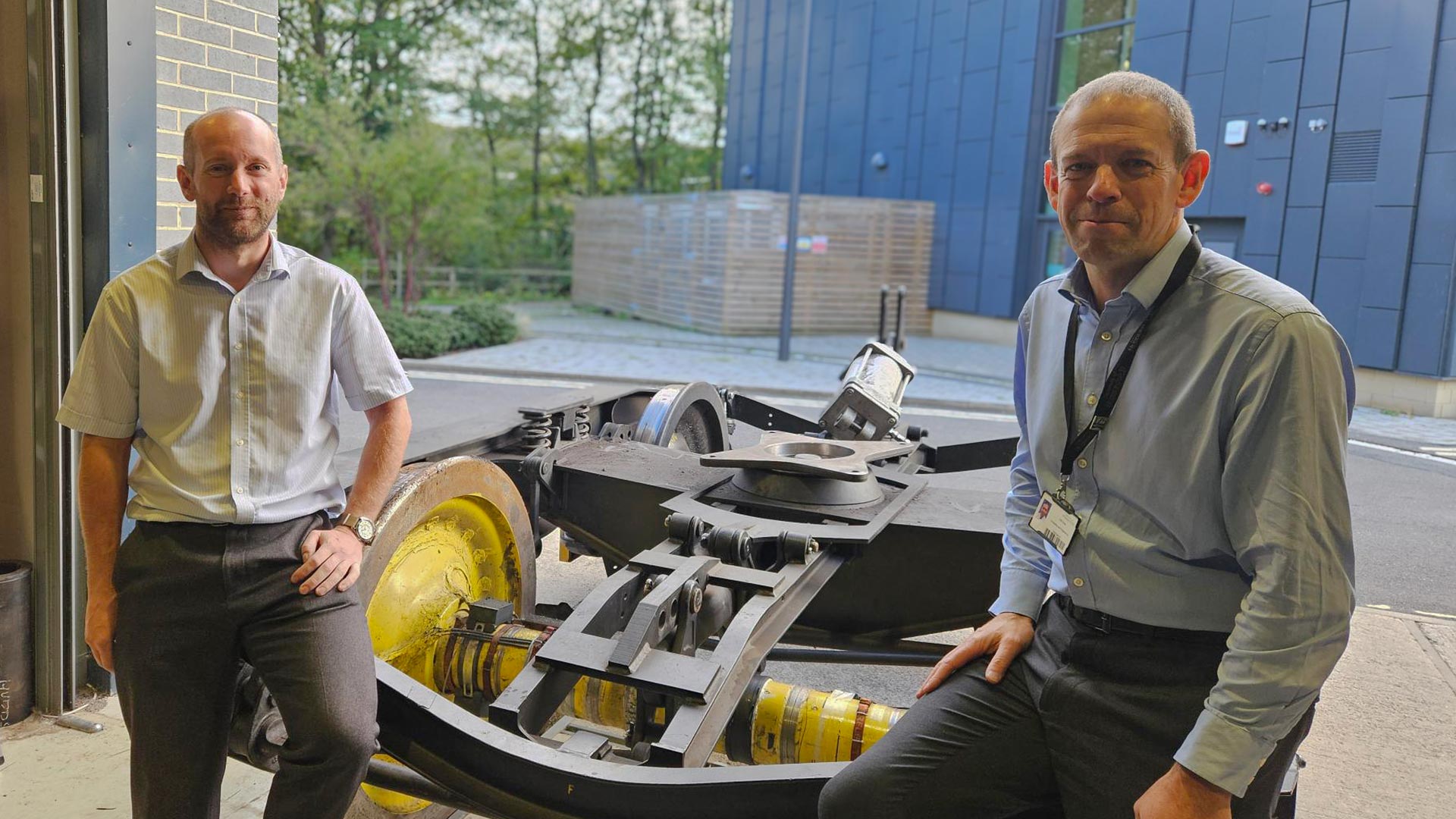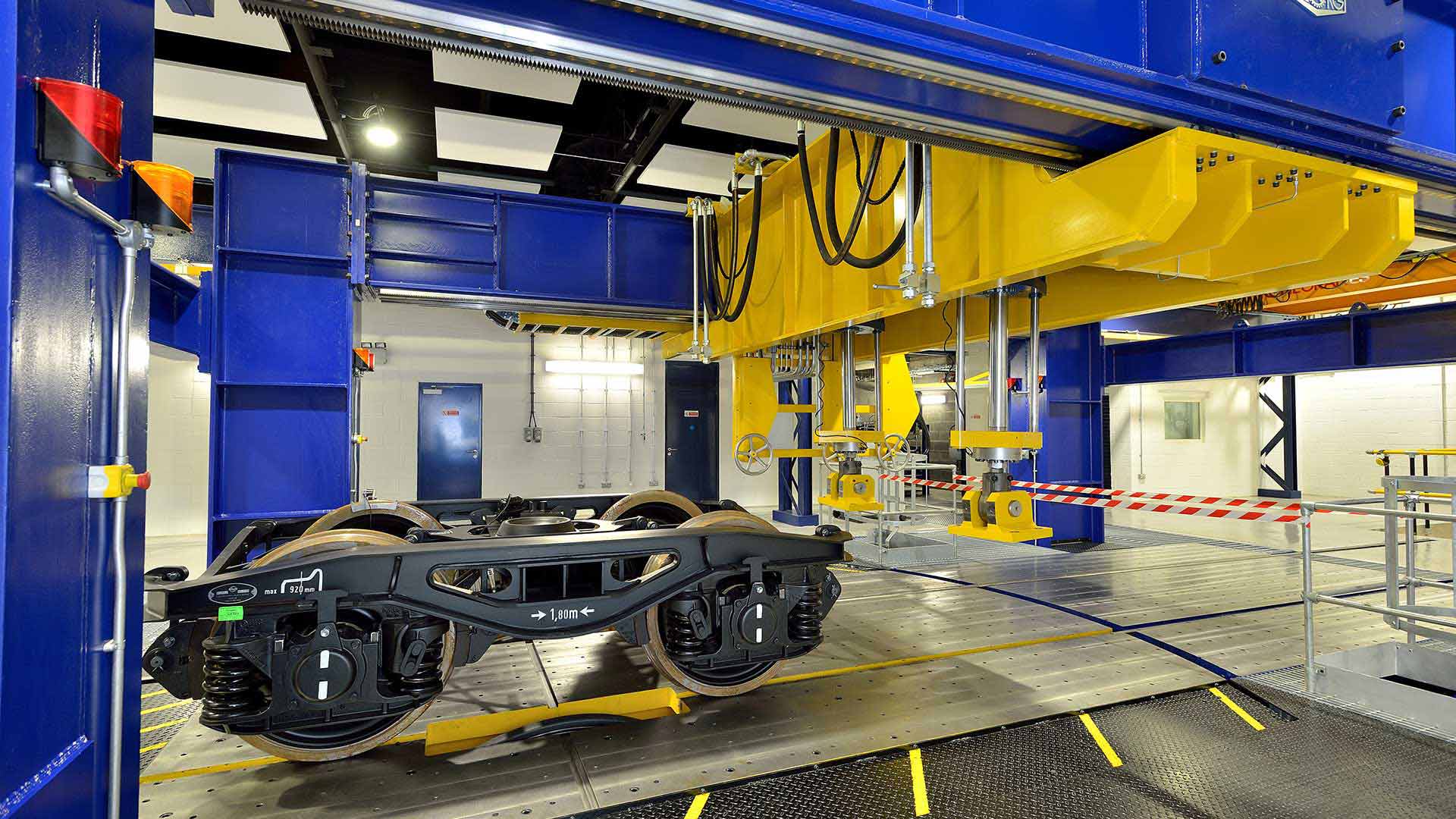Industry-academia partnership puts rail research to work

A long-standing strategic collaboration between the Rail Safety and Standards Board (RSSB) and the University of Huddersfield’s Institute of Railway Research (IRR) is making sure research is deployed quickly to benefit the rail industry.
The Partnership, now in its twelfth year, undertakes research that benefits both rail users and railway companies seeking to combine efficiency gains with the highest safety standards. It supports up to 10 full-time academic staff and has allowed the IRR to develop research in fields including wheel-rail interface engineering, passenger comfort, efficient maintenance and operational safety.
A key part of RSSB’s remit is enabling collaboration to ensure that innovation makes a bigger impact across the industry. The results range from safer systems to more comfort for passengers and fewer unnecessary delays. As well as enhancing the Institute’s research position, the Partnership provides RSSB with a specialist channel for delivering part of its Department for Transport-funded research programme, which looks at cross-industry issues, particularly around interoperability and safety.
Recent work on train overspeeding and freight wagon defects shows how the Partnership’s research can bring early benefits to the rail industry.
Overspeed detection
Incidents of trains travelling above the permitted linespeed are rare but can present significant safety risks, as highlighted by several recent Rail Accident Investigation Branch reports.
The railway currently relies on a combination of safety measures and technologies to monitor and manage overspeed events, such as the Train Protection and Warning System and On-Train Data Recorders. Unfortunately, this results in information that is patchy and not always easily available.
The IRR’s research used train movement data that is readily available from signalling systems to develop methods for detecting overspeeding on a network-wide basis.
The analysis demonstrated that this data can effectively identify instances where average train speeds exceed designated line-speed limits for signalling berths where train speed was fairly constant.
RSSB is now in discussion with the industry Overspeed Working Group and technical experts at Network Rail about the feasibility of building an online demonstrator of an automated overspeed detection system. Eventually, this could become part of the Red Aspect Approaches to Signals toolkit, an online tool that estimates the frequency of trains approaching red signals, considering various factors such as train type, time of day, and day of the week. It was also developed from work carried out under the Partnership with RSSB.

Identifying defective freight wagons
Network Rail has Wheel Impact Load Detectors (WILD) across the railway network to identify flat spots and damage on wheels that can cause large forces on track.
Having previously demonstrated the value of using WILD data for detecting and monitoring offset loads, IRR researchers recognised this data, together with numerical modelling, could also be used to detect and monitor offset loads or suspension faults on wagons. These issues can be hard to identify when they occur in service and can increase the chances of a derailment.
Working in collaboration with freight train operators and maintainers, IRR researchers were able to identify positive correlations for vehicle bogie frame twist, and spring condition. This then allowed faulty wagons to be removed from service for maintenance, where they otherwise may have continued in traffic for some time.
Initial trials identified a number of wagons with suspension defects. Following this success and positive feedback from industry, RSSB is incorporating the analysis into its Freight Condition-Based Maintenance support tool. The tool is currently in development and will provide operators and maintainers with an overview of their fleet and how the conditions of individual vehicles change over time.
IRR Associate Director and Strategic Partnership lead Dr Julian Stow said: “These projects demonstrate how our research can directly improve rail industry safety. Having a long-term partnership with RSSB is critical to supporting the journey to implementation and ensures our work has real impact.”
Luisa Moisio, RSSB’s Director of Research, added: “For over a decade, RSSB’s Strategic Partnership with the University of Huddersfield has exemplified the power of collaboration between industry and academia—transforming pioneering research into practical, widely used tools that enhance the safety and efficiency of the rail network.”
IRR Director and lead for the UK Rail Research and Innovation Network’s (UKKRIN) Centre of Excellence in Rolling Stock, Professor Paul Allen, commented: “With current challenges in securing long term railway research funding, our Partnership with RSSB is critical in enabling and delivering applied research, and forms an exemplar as to how UKRRIN universities can support GBR in delivering against the Rail Technical Strategy.”